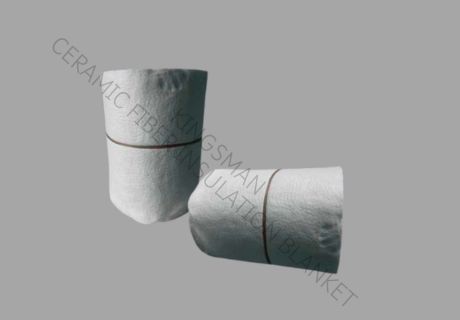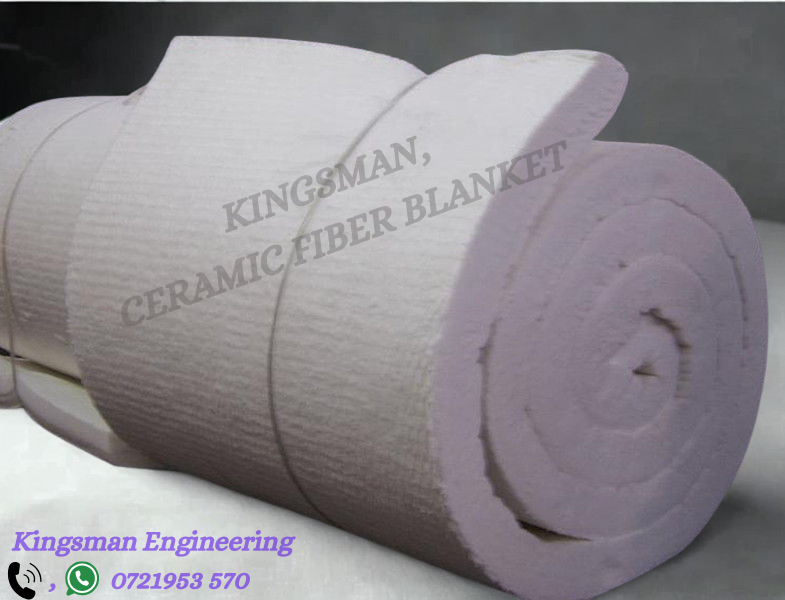Welcome to Kingsman Engineering, your trusted provider of ceramic fiber blankets in Kampala Uganda. We specialize in offering high-quality insulation materials that deliver exceptional performance and efficiency in both industrial and residential applications.

What Are Ceramic Fiber Blankets?
Ceramic fiber blankets are made from high-grade ceramic fibers, designed to provide reliable thermal insulation in extreme conditions. With their ability to withstand very high temperatures, these blankets are widely used for industrial heat management, energy conservation, and fireproofing solutions. Flexible and lightweight, they can be tailored to fit various applications, from industrial equipment to fire protection systems.
What is Ceramic Fiber Blanket Used For?
Ceramic fiber blankets in Kampala Uganda have a wide range of applications, making them ideal for industries that demand heat and fire-resistant materials:
Industrial Furnaces & Kilns: Perfect for insulating high-temperature furnaces, kilns, and ovens used in industries such as ceramics, steel, and glass manufacturing.
Boilers & Heat Exchangers: Ceramic fiber blankets help in reducing heat loss and improving the thermal efficiency of boilers, ensuring better fuel consumption.
Pipes & Vessels: Often used for insulating pipes, tanks, and storage vessels to prevent heat loss and maintain optimal temperature conditions.
Fireproofing: Ceramic fiber blankets offer protection against extreme temperatures, making them ideal for fireproofing applications in both industrial and residential settings.
The R-Value of Ceramic Fiber Blankets

The R-value is a measure of thermal resistance, which indicates how well a material can resist heat flow. Ceramic fiber blankets typically have a high R-value due to their low thermal conductivity and exceptional insulating properties. The R-value depends on the thickness and density of the blanket, but generally ranges from R-2.5 per inch of thickness. This makes ceramic fiber blankets one of the most efficient insulating materials for high-temperature environment
Advantages of Ceramic Fiber Blankets
High Temperature Resistance: Ceramic fiber blankets can withstand temperatures of up to 1430°C (2606°F), making them perfect for high-temperature industrial applications.
Energy Efficiency: By providing excellent insulation, ceramic fiber blankets help minimize heat loss, leading to lower energy consumption and cost savings.
Lightweight & Flexible: Easy to handle and install in both large and small spaces, reducing labor costs and simplifying installation.
Non-Corrosive: They do not react with chemicals, oils, or other substances, ensuring they maintain their integrity even in harsh environments.
Durable & Long-Lasting: Resistant to mechanical stress and wear, ceramic fiber blankets have a long service life and can endure extreme conditions without losing their insulating capabilities.
Safe to Use: When installed properly, ceramic fiber blankets pose no harm to human health. However, safety gear should be used when handling to avoid irritation from the fibers.
Applications of Ceramic Fiber Blankets in Uganda
Ceramic fiber blankets have a wide range of uses in Uganda’s growing industrial sector, including:
Manufacturing plants requiring high-temperature insulation.
Energy and power generation industries looking to optimize boiler and furnace performance.
Residential projects where fireproofing or heat insulation is needed, such as in stoves, fireplaces, and outdoor ovens.
Frequently Asked Questions (FAQs)
1. What is a ceramic fiber blanket?
A ceramic fiber blanket is a high-performance thermal insulation material made from ceramic fibers. It is designed to withstand extreme temperatures and provide superior insulation in industrial and residential applications.
2. How does a ceramic fiber blanket work?
Ceramic fiber blankets work by reducing heat transfer through their low thermal conductivity. They provide a barrier against heat loss, keeping the temperature stable within the insulated area. This helps improve energy efficiency and ensures optimal performance of high-temperature equipment.
3. What are the key advantages of using ceramic fiber blankets?
Some key advantages include:
High temperature resistance (up to 1430°C)
Low thermal conductivity and high R-value
Lightweight and easy to install
Long-lasting and durable
Non-corrosive and safe to use
4. How is the R-value of ceramic fiber blankets calculated?
The R-value of ceramic fiber blankets depends on the blanket’s thickness and density. On average, the R-value ranges from R-6 to R-10 per inch of thickness, making it a highly effective insulator for high-temperature applications.
5. Can ceramic fiber blankets be used in residential applications?
Yes, ceramic fiber blankets can be used in residential applications like fireproofing fireplaces, stoves, and outdoor ovens. They are also useful for insulation in high-temperature areas, such as around chimneys.
6. What industries use ceramic fiber blankets in Uganda?
Ceramic fiber blankets are widely used in industries like manufacturing, power generation, construction, and energy. They are essential for furnaces, kilns, boilers, and any applications that require heat insulation.
7. How long do ceramic fiber blankets last?
With proper installation and maintenance, ceramic fiber blankets can last for several years, typically ranging between 5 to 10 years, depending on the operating conditions.
8. What is the cost of ceramic fiber blankets in Uganda?
The price of ceramic fiber blankets depends on the density, thickness, and temperature rating. For an accurate quote, please contact us directly so we can provide a customized solution based on your specific needs.
9. How can I order ceramic fiber blankets from Kingsman Engineering?
Ordering is easy! Simply contact us via phone, email, or visit our office to discuss your requirements. We will guide you through the process and help you choose the best solution for your project.
